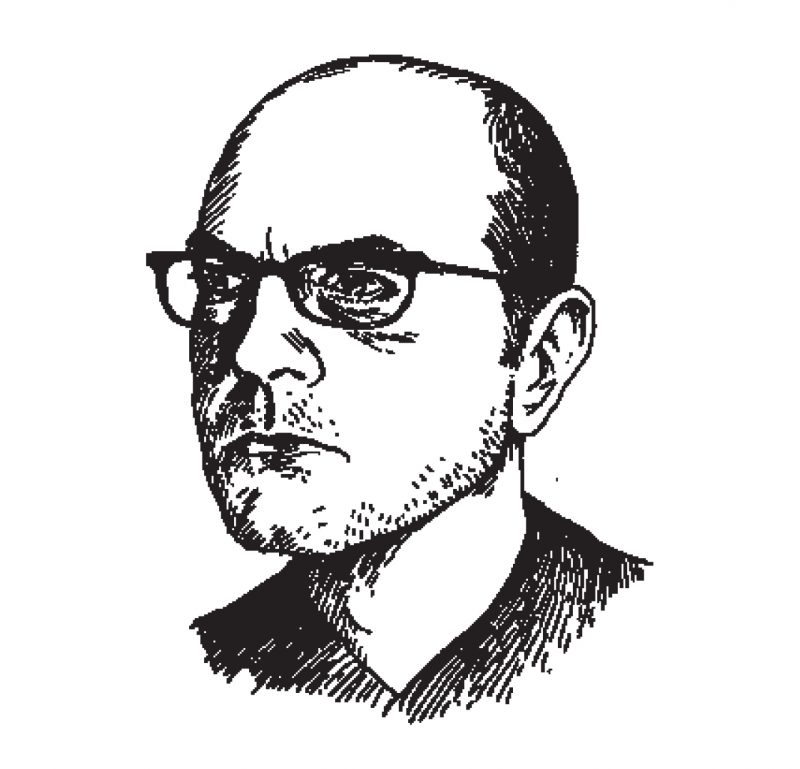Charles Burns is one of today’s most dramatically talented cartoonists. His comics can be funny and creepy, but they always feel trenchant, and textured, in part because he brilliantly inhabits genres like the romance, the horror story, and the detective story without simply rejecting their conventions or ironically reversing their concerns. This tension in his work seems to mirror his obsession with the relationship between external and internal states of being, surface and depth (which we recognize, say, in the theme of “teen plague” that he’s returned to throughout a decades-long career).
Burns gained a following in the avant-garde comics magazine RAW in the early ’80s, and he’s since published numerous book collections, including Big Baby in Curse of the Molemen (1986); Hard-Boiled Defective Stories (1988); Skin Deep: Tales of Doomed Romance (1992); Modern Horror Sketchbook (1994); Facetasm, with Gary Panter (1998); Big Baby (2000), and Close Your Eyes (2001). In addition to prolific illustration work for venues such as the New Yorker and this magazine, his range of projects over the years has included designing the sets for Mark Morris’s restaging of The Nutcracker (renamed The Hard Nut) and contributing to MTV’s Liquid Television, which created a live-action series based on his character Dog-Boy.
Burns may be most famous, however, for Black Hole, a twelve-issue comic-book series that made my life—and plenty of other people’s—that much more interesting from 1995 to 2004. Black Hole takes place in Seattle in the 1970s, focusing on a group of four teenagers who all get “the bug,” a fictional STD that deforms them in different ways. Rob grows a mouth—complete with teeth—on his neck; it speaks when he’s sleeping. Chris sheds her skin. Keith develops tadpole-shaped bumps on his torso; Eliza sprouts a tail. Black Hole’s precise black-and-white images are gorgeous and frightening at once; the rich narrative is dark without being despairing. Since the graphic-novel version appeared to acclaim in 2005, Burns has published a book of photography, One Eye, and completed a segment of an animated feature film called Peur(s) du Noir (Fear(s) of the Dark). His graphic novel in progress is, dizzyingly, about both punk and Tintin. I visited Burns, who lives in Philadelphia with his wife, daughters, and black cat, Iggy, at his studio in October. Not only is he a masterful draughtsman, but he makes an excellent cup of coffee.
—Hillary Chute
I. COVERS
THE BELIEVER: How did you start working for the Believer, anyway?
CB: It...
You have reached your article limit
Sign up for a digital subscription and continue reading all new issues, plus our entire archives, for just $1.50/month.
Already a subscriber? Sign in





